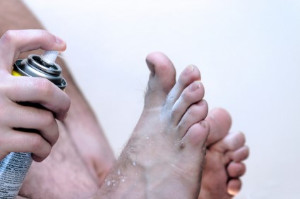
Athlete's foot is a fungal infection that typically appears as a rash between the toes. Symptoms include itching, redness, cracking, or blistering. Athlete’s foot warrants prompt attention since it can be easily transmitted to other areas of your body. This infection primarily targets the skin between the toes or the soles of the feet. Scratching the affected area and touching other parts of the body can contribute to its spread. This can also lead to complications like bacterial infections or cellulitis. Athlete's foot is fueled by fungi that thrive in warm, moist environments, making individuals susceptible if they neglect foot hygiene or wear non-breathable footwear. Walking barefoot in communal areas, such as locker rooms or swimming pools, increases the risk. Treatment of athlete’s foot infections typically includes antifungal medications. However, should symptoms persist beyond two weeks, or worsen, or if you have other health concerns such as diabetes, it is suggested that you make an appointment with a chiropodist for more advanced care.
Athlete’s foot can be uncomfortable and unsightly. To learn more about preventing and treating this condition, please consult with Emily Yu, B.Sc from Uptown Foot Care Clinic. Our specialist will assess your condition and provide you with quality foot and ankle treatment.
What Is Athlete’s Foot?
Athlete’s foot refers to an infection of the skin on the feet that is caused by a fungus. This fungus is contagious and thrives in warm and moist environments. It is often spread in common areas such as public pools, locker rooms, and showers. It can also spread when sharing personal items, like shoes or towels, with an infected person.
Symptoms
The symptoms of athlete’s foot may include:
Itching, stinging, or burning of the skin on the feet
Cracking or peeling skin, especially between the toes and on the soles of the feet
Scaly, red rash on the foot
Blisters
Foul odor
Treatment
Treatment for athlete’s foot typically involves using over-the-counter topical antifungal medications on the feet. When over-the-counter options are ineffective, you may need to take prescription oral medications or topical antifungal drugs, or a combination of both.
Prevention
Preventing athlete’s foot places an emphasis on good foot hygiene practices.
You can prevent athlete’s foot by:
Washing and drying your feet thoroughly every day
Wearing shoes when walking in public areas
Not sharing personal items, like shoes or socks, with others
Wearing shoes and socks made out of breathable materials
If you have any questions, please feel free to contact our office located in . We offer the newest diagnostic and treatment technologies for all your foot care needs.
